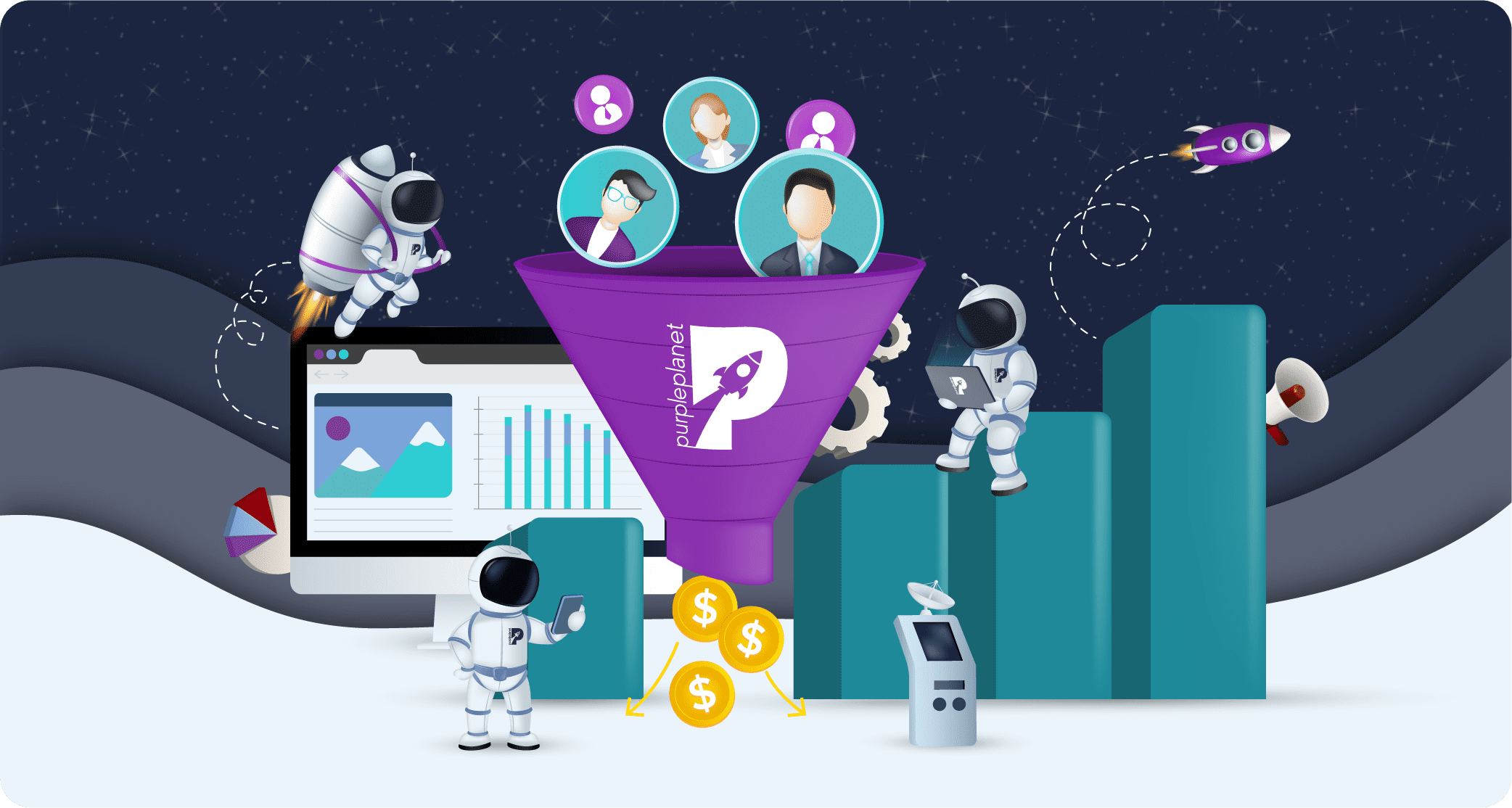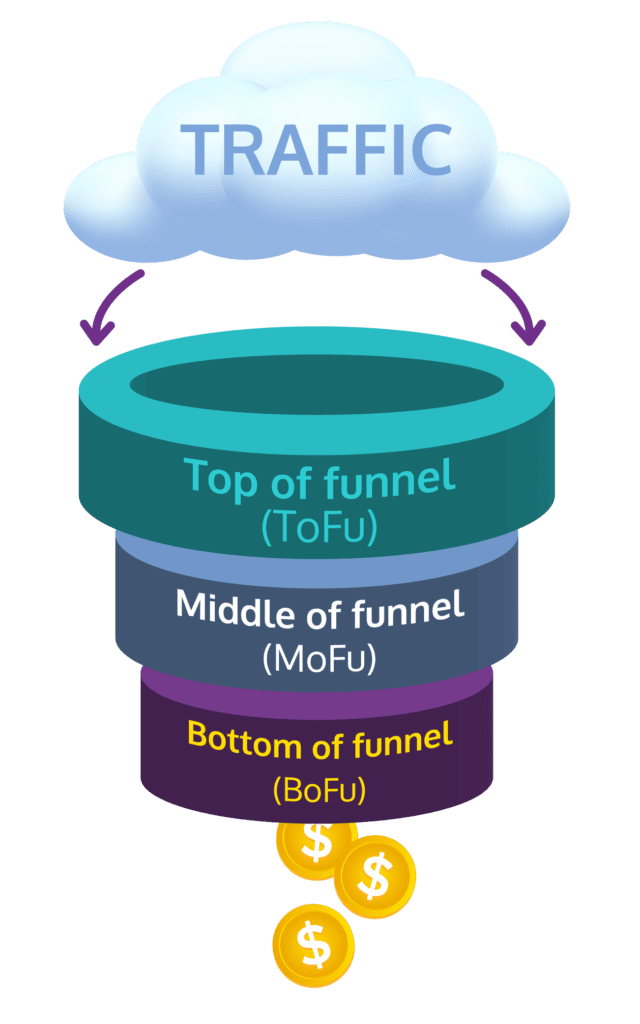
Do You Need a Sales Funnel?
Key Takeaways
- Sales funnels are for all businesses that value efficiency and maximising their potential.
- If you want to run lead generation and nurturing on autopilot, it’s time to upgrade and invest in a sales funnel.
- Sales funnels optimise each stage of the customer journey: Awareness, Consideration, and Conversion. So, it’s a no-brainer for most companies
Does your business need a sales funnel?
No matter what you sell, getting prospective customers to buy doesn’t happen instantly. Growing your business with online marketing can be a confusing, frustrating, and downright foggy experience.
Do you still need a sales funnel if you already have a website?
The answer is yes!
If you don’t currently have a well-designed sales page, you will probably only convert at 1–2%, leaving a lot of money on the table.
Buyers need to be guided, incentivised, encouraged, and inspired to take action. That’s what sales funnels are here for!
And if you’re wondering if this will work for your type of business, the answer is yes. Many people think that their business is different and worry that funnels may not work for them. The reality is that funnels work for any type of business trying to generate leads or create customers — the funnel just needs to be tailored to them.
So, what is a sales funnel?
A sales funnel is the customer’s path from first hearing about your product or service to purchasing that product or service. Without a strong funnel, even the most brilliant products aren’t going to get to the people who need them most.
Have you come across these strange acronyms ToFu, MoFu, BoFu? These are nothing more than the stages of a sales funnel.
Site visitors are at the top of the funnel (ToFu) when they’re initially interested in your product or service.
The middle of the funnel (MoFu) is achieved when the visitor clearly defines their problem and narrows down certain solutions. Your product or service is now being considered!
At the bottom of the sales funnel, you’ll find your BoFu leads – these potential customers are highly qualified and well on their way to making a purchase.
Measuring your customer’s journey from the Top (Target Audience), Middle (Potential Customers), and Bottom (New & Existing Customers) of a sales funnel is vital!
In reality, every online business has some sort of a sales funnel in place because they all need to convert potential customers into leads and then into paying customers.
Sales funnels are created with one goal in mind, and there are many goals to choose from. Some sales funnels are for lead generation, whilst others are for sales, webinars attendance, and high-ticket offers.
Here are some general tips to follow when creating your sales funnels.
1. Drive high-quality traffic
The foundation for any profitable sales funnel is high-quality traffic. Low-quality traffic that isn’t interested in what you’re offering (or can’t afford it) — will always result in a low conversion rate and a high cost per conversion.
So, you shouldn’t target everyone. This is the most common lead generation mistake. You need to know your ideal customer and understand their pain points. What their problem is, and what their fears are.
Your aim should be to find a painful problem that your ideal customers are struggling with, which is either the same or related to the problem that your frontend offer solves.
Remember that clients may think about their sub-problems and not really about the big picture — their main problem. It is your job to identify it.
A good way of defining your target audience is by creating buyer personas. You can’t get to know every customer or prospect individually, but you can create a customer persona to represent your customer base.
Refer to this model customer as if they were a real person. This will allow you to craft marketing messages targeted specifically to them.
2. Create value
Your offer should be so compelling that your customer persona cannot say no to it.
Before you can sell someone one of your main products or services, you’ve got to draw them in with a compelling offer. This offer is called bait, and it’s just the beginning of the sales funnel.
After someone confirms their order by entering their shipping and payment information, they are taken to an upsell page. Here, they can add products to their order with just a single click (since they’ve already entered their payment and shipping information). This is where most people abandon their cart, and upselling pages are how you increase the average cart value. There’s a lot more you can do, but we’ll come back to it in the next steps!
3. Good copywriting
Writing good copy is a form of art. But you need to remember that when writing sales copy, the only goal is the results. The best sales funnel copy is clear and compelling. Tell your potential customers what they will receive and why it’s the best choice.
Explain why they need it and why they need to take action straight away.
Remember that to write a good copy, you need to understand the offer and why it’s compelling, as well as understand the customer persona and why they need what’s being offered.
4. Use Social Proof
Social proof is an element of a sales page that can hugely impact the conversion rate.
According to OptinMonster, 87% of buying decisions begin with research conducted online before the purchase is made, and 92% of consumers are more likely to trust non-paid recommendations than any other type of advertising.
Therefore, you must think about including testimonials, success stories, and business statistics on your sales page to improve your conversions!
5. Remove navigation
This tip is simple but important. If you want the highest possible conversion rate, remove all navigation on each page of your sales funnel. The fewer places there are to click and distract your potential customers, the better.
If you’re trying to sell a specific product or service to a certain group of people, focus on that goal only. It’s not a classic website; it’s a sales funnel.
6. Use upsells and downsells
Here’s another fact of online marketing for you to think about: when someone buys something, they are likely to buy more things.
And your job is to capitalise on that and sell them more products or services while they’re in the mood.
Having a sales funnel with order bumps, upsells, and downsells is crucial as it increases the average order value and gives your potential customers what they might want.
An order bump is when a product or service is added to a customer’s basket at the checkout page. The order bump offer is presented on the checkout page, and with a single click, the customer can add the product to their purchase.
Additionally, we use an upsell page when somebody has already purchased a product or service, and we use downsell pages when someone says “no” to the initial upsell. Downsells are usually a watered-down version of what you offer on the upsell page.
7. Follow up email sequence
Selling straight away is great. And ideally, lots of people will convert on the first pass.
But some sales will happen during the follow-up process… because that’s just how marketing and sales work.
Therefore, you need to implement a lead nurturing sequence that will help you to convert those people in later stages.
What’s important here is to strike the right balance between providing value and selling your product. You can put customers off by being too salesy, but equally, you can’t be leaving money on the table by not promoting your product.
Remember, it is just the beginning!
A lead generation funnel is a system existing within your overall sales funnel. Each stage exists in connection with other stages. So, everything that happens at each stage of your sales funnel affects the success potential or existing customer’s behaviour in subsequent stages of that sales funnel.
Are you ready to launch your funnel?
If you need help creating your sales funnels, book a funnel strategy call with us!

